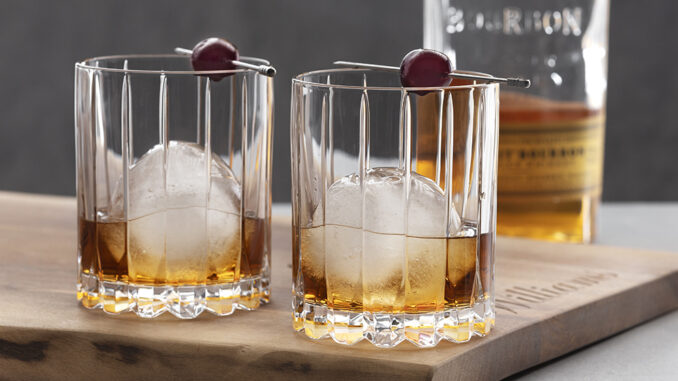
A whisky glass is more than just a vessel to drink your favorite spirit; there are many different types available on the market today, each with its own unique purpose to enhance your experience. Let’s take a look at the most popular whisky glasses to find out which one is right for your collection.
Snifter Glass
Many whisky aficionados believe the snifter is a delightful option. Tapered sides concentrate the aromas, making it easier to enjoy nuanced flavors. The small opening makes it easy to take careful sips, savoring your fine whisky.
Snifters are similar to a rocks glass, but are taller and have a narrower brim. They typically have a short stem and classic bowl shape. This allows the whisky to swirl around in the glass, releasing its flavor and aroma.
Tulip
The Tulip glass is a popular option for those who want to add a bit of style to their drinking experience. The fluted sides help to capture the aromas of the whisky, while the narrow top prevents too much alcohol from being consumed at once.
Highball
If you prefer mixed drinks, then a highball glass might be the right choice. These glasses are tall and thin, with a narrow opening that keeps the mixer from watering down your whisky. They are ideal for serving cocktails such as the Whisky Sour or Manhattan.
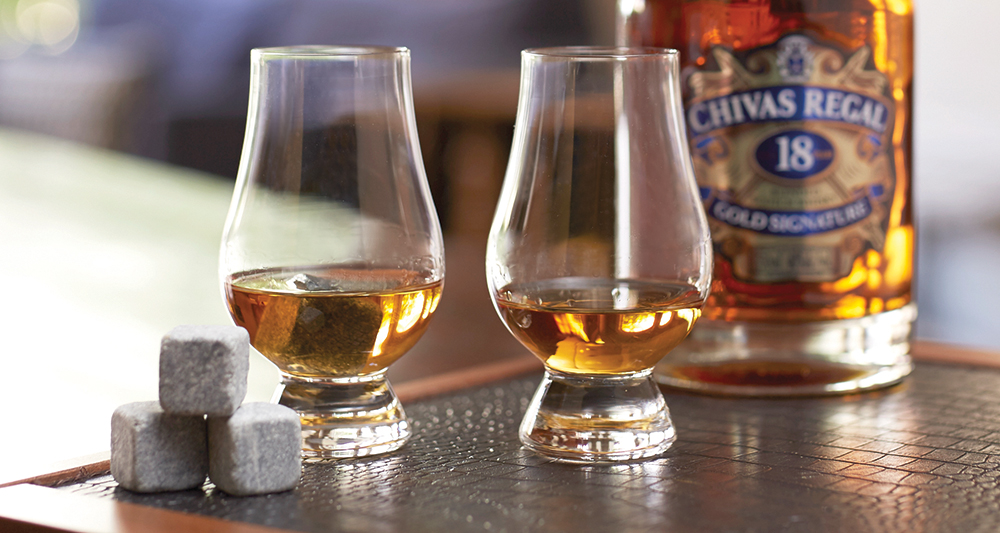
The Glencairn Whisky Glass
Glencairn glasses might be the most ideal way to enjoy your favorite spirit. It is specifically designed to appreciate the color and clarity of whisky, while the tapered sides enhance the aroma. This is exactly why these are the glasses preferred by distilleries and for tasting flights.
Yet another reason to use a Glencairn glass is the way it feels in your hand. The weight of the glass is just right, and the curved sides fit perfectly against your fingers. If you aren’t sure which glass is right for your bar, Glencairn is the best choice.
The Tumbler
Drinking whisky out of a conventional tumbler may seem ordinary, but when whisky is barrel-aged, this shape picks up subtle flavors from the oak barrel that other glasses do not.
Also known as an old-fashioned, lowball or rocks glass, they give you a rich, complex tasting experience. The smooth edges of a tumbler release the aromas of the whisky, making it even more enjoyable to drink. To enjoy its full effect, reach for a rocks glass; they come in many beautiful styles.
Of all the types of whisky glasses, this is our favorite. It offers versatility, can easily accommodate ice cubes, and allows for larger pours. The heavy base provides stability and prevents tipping, making it the perfect glass for whisky tastings and other events. Whether you’re a whisky lover or just looking for the perfect glass to enjoy your next drink, the rocks glass is our pick.
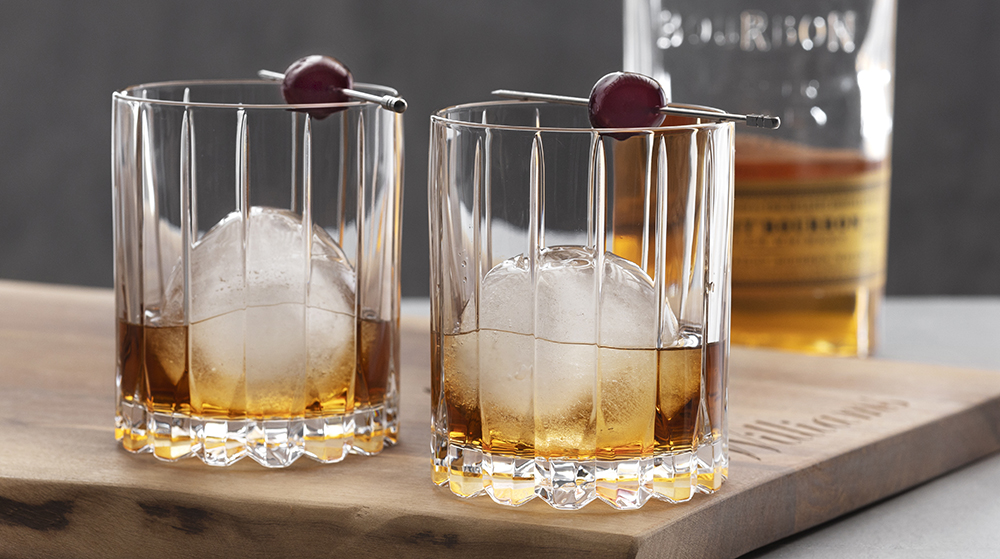
The Double Old Fashioned Glass
There’s something about sipping whisky out of one of these that makes the experience more sophisticated. Maybe it’s the rounded bottom of the glass, which provides a more stable base for your drink.
These generously sized glasses are an elevated version of the tumbler. Their wide opening makes it easy to swirl your drink and release delightful aromas. Next time you’re in the mood for a truly luxurious whiskey-drinking experience, reach for a double old-fashioned glass.
The Shot Glass
When you need to measure and serve liquor, or serve a small amount quickly, shot glasses are the easy option. They come in a variety of shapes and sizes, and many whisky drinkers prefer small pours. Downing a shot of whisky is almost like a rite of passage. Whether you’re savoring it for the first or hundredth time, shot glasses are a classic way to serve whisky.
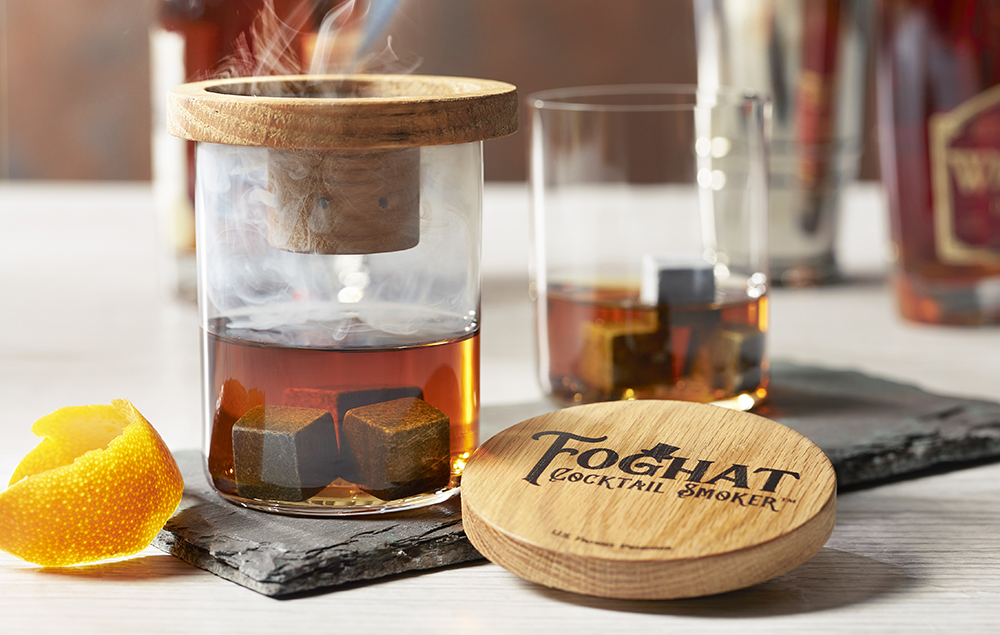
The Best Glasses for Each Type of Whisky
The type of glass you use can have a big impact on the taste and quality of your experience. Everyone has their own taste when it comes to whisky, and that should be reflected in your choice of glasses.
Bourbon
If you’re drinking bourbon, go for a classic rocks glass. The wide mouth and thick base of this glass will bring out the rich, caramel flavor of bourbon.
Rye Whiskey
If you’re drinking rye whiskey, try a tulip-shaped glass. This will trap the aromas, allowing you to fully appreciate all the different flavors.
Scotch Whiskey
If you’re drinking Scotch whisky, opt for a traditional snifter glass. The narrow opening concentrates the smoky, often peated flavor, making it more intense on your palate.
What is a Dram of Whisky?
The term “dram” refers to a small amount of liquor, with origins from Ancient Greek’s “drachma” that evolved over time to be a weight measurement and today refers to a pour of whisky.
First, choose the right barrel-aged whisky. If you prefer a smoky flavor, then opt for a Scotch whisky that has been aged in a barrel that previously held Islay peat.
Next, pour the dram into the appropriate glassware. The most important thing to remember is that the glass should be clean and dry; even the slightest bit of water can alter the taste of the drink.
Avoid using a glass that has been treated with any type of detergent, as this can also affect the flavor. The best way to clean your glass is to simply rinse it with warm water and let it air dry, even if it is dishwasher safe. Feel free to experiment with different types of glassware for your dram.
A dram does not equal a certain amount of liquor, it particularly matters where you order one. Some bartenders may give you a generous pour, while others may stick to a measured amount.
If you’re in the United States, you can safely bet that you’ll get about 1.5 ounces in a standard dram, which is about 44ml.
If you’re in the UK, most places will serve anything between 25ml – 35ml, with Ireland leaning towards a 35ml pour, known as a ‘large dram’. If you’re in Scotland, do yourself a favor and order a dram – you’ll likely receive a bartender’s pour or a large dram.
Take small sips and let the whisky roll around your mouth before swallowing. Savor the flavor and aroma of your drink. Some whisky will open up better with a few drops of water.
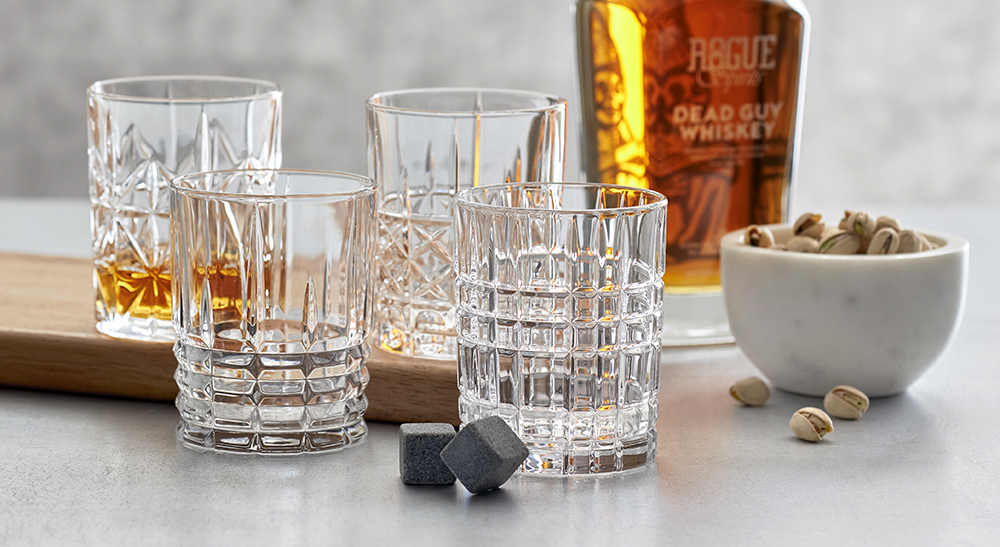
The History and Origin of the Whisky Glass
Whisky glasses have been around for centuries, and their origin can be traced back to the Scottish Highlands. In early days, Highland farmers would distill their own whisky using pot stills. The finished product was typically stored in wooden casks, and it was not uncommon for it to be enjoyed straight from the cask, using a simple cup made of wood or metal. Some of these cups are known as quaichs, and are still used in Scottish traditions to toast to friendship and love.
Today, glasses made for drinking whiskey come in a variety of shapes and sizes. However, the basic design, known as a glass tumbler, has remained largely unchanged since the 19th century. Whether you’re sipping on a single malt or enjoying a glass of blended whisky, there’s no better way to experience the complex flavors and aromas of this beloved spirit than from a traditional glass.
A Guide to Buying the Perfect Set of Whiskey Glasses
Not only do they enhance flavors, but they also make a stylish addition to any shelf, countertop or home bar. With so many different options on the market, it can be tricky to know where to start.
The first thing you’ll need to consider is the size of the glass. If you plan on mostly drinking alone or with one other person, a set of two small glasses may be all you need. If you often have larger groups over for drinks, it may be worth investing in a set of four or six larger glasses.
Next, consider the shape. Traditional whisky glasses have a wide bowl and tapered sides, while more modern styles often have straight sides and a narrower opening. Ultimately, the decision comes down to personal preference and which glass allows the cocktail to best present itself.
If you want your whisky to retain its heat, go for a glass with wider sides. If you prefer neat or on the rocks, opt for a straight-sided glass that will prevent the ice cube from melting quickly.
Don’t forget about style. Whisky glasses come in a range of materials, from classic clear glass to ornate cut crystal. Choose a set that compliments the rest of your home décor and fits your personal taste. With these guidelines in mind, you can find the perfect set of whisky glasses for your home.
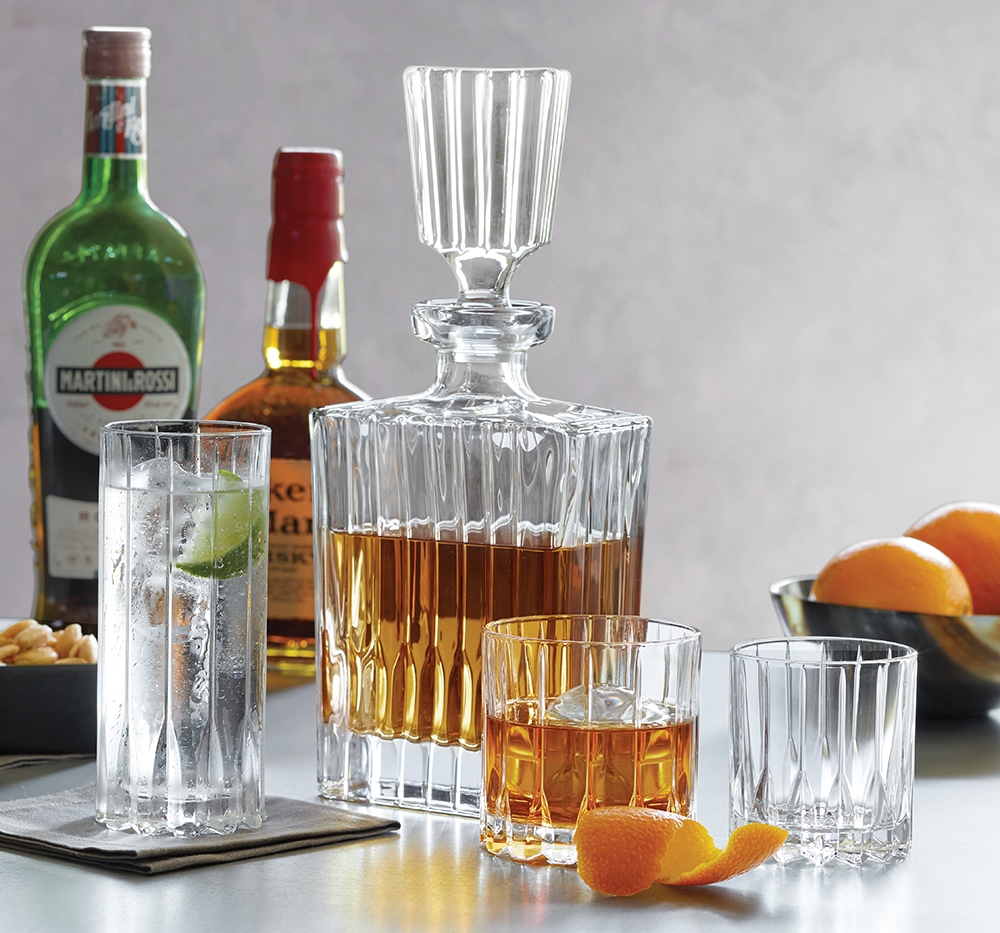
Frequently Asked Questions
Why does whisk(e)y have two different spellings?
The answer can be traced all the way back to the 15th century due to small differences in the Gaelic dialects spoken in Scotland and Ireland. Despite this variation, most of the world used the term ‘whisky’ until the 19th century when Irish companies began to mix malted and unmalted barley.
They chose to stick to their Gaelic roots and start using ‘whiskey’ with an ‘ey’ as a way to differentiate their production methods from their Scottish competitors, leading the United States to adopt the spelling as well. The rest of the world, notibly Scotland, Japan and Canada, still use ‘whisky’ to this day.
This doesn’t come without a few exceptions. Some distributors in America have opted to keep the ‘e’ off of their labels, one brand notably being Maker’s Mark. Their reasoning is simply based on preference – they are paying homage to the Samuel family hertiage, which is, you guessed it, Scottish and Irish.
Do all whisky glasses have a bulb at the bottom?
No, the bulb is designed to capture aromas, however some people prefer to drink their whisky from a straight-sided glass, as they find it allows them to appreciate the color of the spirit.
How do you hold a whisky glass?
For stemmed glasses, or glasses with bulbs, place your forefinger and thumb around the glass or stem. Swirl your glass around to release aromas, just like you would do at a wine tasting. Bring the whisky to your nose to savor the bouquet. Take slow sips and slosh it around in your mouth, “chewing” on the whisky to fully coat your tongue. This will help you fully appreciate the complex flavor.
For stemless glasses, or if you want to warm the whisky, place your fingers and thumb either around the glass or cupping the base. Warming the whisky will alter the flavor for a new experience.
Is there a difference between leaded and lead-free crystal?
Leaded glasses are made with 24% lead oxide, which gives them a higher refractive index and makes them heavier than lead-free crystal glasses. They also have added brilliance and sharp facets. They are safe to use for serving whisky, but leaded crystal should not be used for long-term storage, such as in a decanter. Most contemporary whisky glasses come in a sturdier lead-free crystal option. Shops will indicate whether glasses are leaded or lead-free.
Are expensive whisky glasses worth it?
Ultimately, this is a personal decision. Try out different types of glasses until you find the ones that you prefer; the main emphasis should be on keeping them clean and dry. If you prefer fine whisky, why not invest in high-quality glasses to match!
About the Author: Wesley Cable is a wine lover from California who hosts a weekly wine podcast called Obsessed with Wine and writes for his blog at wesleycable.com.